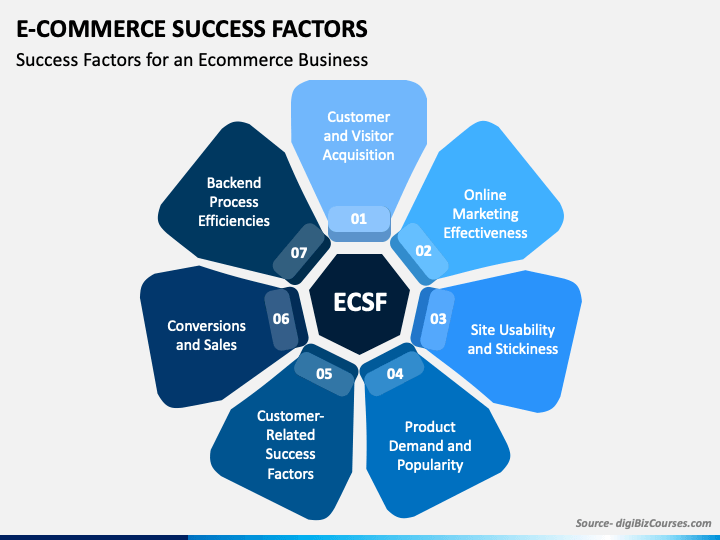Welcome to the world of ecommerce, where opportunities are endless and success is just a few clicks away. Whether you're a seasoned entrepreneur or just starting out on your business journey, having a well-designed website is crucial for attracting customers and driving sales. In this blog post, we'll walk you through the best practices for building a successful ecommerce platform that not only grabs attention but also keeps visitors coming back for more.
From defining the purpose of your ecommerce website design examples, to optimizing the checkout process, we'll cover everything you need to know about creating an online store that stands out from the crowd. So grab your favorite cup of coffee (or tea) and get ready to dive into the fascinating world of website design for ecommerce!

Defining the Purpose of Your Ecommerce Website
Your ecommerce website is your virtual storefront, open 24/7 to customers from all over the world. But before you start designing it, it's crucial to define its purpose. Are you selling products directly to consumers? Or are you more focused on B2B sales? Understanding your target audience and their needs will help shape the design and functionality of your site.
Consider what sets your business apart from competitors and how you can highlight those unique qualities through your website. Is it exceptional customer service, a wide range of product options, or perhaps a commitment to sustainability? Whatever it may be, make sure that message is clear throughout every page.
Think about the goals you want to achieve with your ecommerce site. Do you want to increase brand awareness, drive online sales, or generate leads for future marketing efforts? Defining these objectives early on will guide your design choices and ensure that every element of your website aligns with them.
Another aspect to consider when defining the purpose of your ecommerce website is scalability. Are you planning for future growth and expansion? If so, make sure that your chosen platform has the flexibility and capabilities needed to support increasing traffic and sales volume down the line.
By taking the time to clearly define the purpose of your ecommerce website at the outset, you'll lay a solid foundation for success in building an engaging online shopping experience for both new and returning customers alike. So grab a pen and paper (or open up a blank document) and start brainstorming!

What kind of design is good for an ecommerce website?
Designing an effective and visually appealing ecommerce website involves several considerations. While website design examples and preferences can vary based on the specific brand and target audience, here are some general guidelines for creating a good ecommerce website design:
- Clean and intuitive layout: Keep the design clean, uncluttered, and visually balanced. Use a grid-based layout with clear sections for different content elements like product categories, featured products, and shopping cart.
- Clear navigation: Make sure the navigation is easy to understand and use. Use a clear and consistent menu structure that allows users to quickly find what they are looking for. Include a search bar prominently for easy product discovery.
- Mobile responsiveness: Optimize your website for mobile devices since a significant portion of online shopping is done on smartphones and tablets. Ensure that the website is fully responsive, with a design that adapts to different screen sizes.
- Strong visual elements: Use high-quality product images and videos to showcase your products. Incorporate attractive and relevant visuals to enhance the overall appeal of the website. Consider using professional product photography and engaging lifestyle images.
- Consistent branding: Maintain consistent branding throughout the website. Use your brand's colors, typography, and logo to create a cohesive look and feel. This helps in building trust and recognition among your customers.
- Clear product information: Ensure that product details, including descriptions, prices, sizes, and variants, are clearly displayed. Use bullet points, headings, and tabs to organize information effectively. Include customer reviews and ratings to enhance trust.
- Streamlined checkout process: Make the checkout process as simple and streamlined as possible. Minimize the number of steps required for customers to complete a purchase. Provide progress indicators, clear calls to action, and secure payment options.
- Trust signals and security: Display trust signals such as secure payment icons, SSL certificates, and trust badges to reassure customers about the safety of their personal information. Highlight any security measures you have in place to protect customer data.
- User-friendly product search: Implement a robust search functionality that allows customers to find products quickly. Include filtering options such as price range, color, size, and brand to help users narrow down their choices.
Remember, these are general guidelines, and the design choices should align with your specific brand identity, target audience, and product offerings. It's also important to regularly test and optimize your design based on user feedback and analytics to ensure a seamless and enjoyable shopping experience.

Creating a Memorable Domain Name and Brand
When it comes to building a successful ecommerce website, one of the first steps is creating a memorable domain name and brand. Your domain name should be unique, catchy, and easy to remember. It should also reflect your brand identity and what you offer.
A great way to come up with a domain name is to brainstorm keywords that are relevant to your products or services. Think about what makes your business stand out from the competition. Consider using words that evoke positive emotions or convey the value of your offerings.
Once you have chosen a domain name, it's time to focus on building your brand. Your brand encompasses everything from your logo and color scheme to the tone of voice you use in your content. Consistency is key here - make sure all aspects of your branding align with each other and create a cohesive image.
Your brand should also resonate with your target audience. Conduct market research to understand their preferences, values, and aspirations. Use this information as inspiration when designing your website and crafting marketing messages.
Remember that building a memorable domain name and brand takes time but can pay off in the long run by establishing trust with customers, differentiating yourself from competitors, and fostering customer loyalty.

Designing an Eye-Catching Homepage
Your homepage is the first impression visitors have of your ecommerce website, so it's crucial to make it visually appealing and user-friendly. But how can you design a homepage that catches the eye? Choose a clean and modern layout that reflects your brand identity. Use high-quality images and graphics that showcase your products or services in an enticing way. Remember to keep the design consistent throughout the page for a professional look. Next, prioritize simplicity and clarity in your navigation menu. Make sure it's easy for users to find what they're looking for with clear categories and subcategories. Avoid overcrowding the page with too much information or cluttered elements – less is often more when it comes to homepage design. Another important aspect is using compelling headlines and call-to-action buttons strategically placed on your homepage. This will direct users' attention to specific areas or promotions, encouraging them to explore further. Consider incorporating customer testimonials or reviews on your homepage. This social proof can instill trust in potential customers and increase their confidence in making a purchase. Don't forget about optimizing load times! Slow-loading pages can lead to frustration and abandonment. Optimize image sizes and minimize unnecessary scripts or plugins to ensure a smooth browsing experience. By following these best practices for designing an eye-catching homepage, you'll create a captivating first impression that engages visitors from the moment they land on your ecommerce siteOrganizing Your Products for Easy Shopping
When it comes to ecommerce websites, one of the keys to success is organizing your products in a way that makes shopping easy and enjoyable for your customers. After all, if visitors can't find what they're looking for quickly and easily, they're likely to abandon their carts and take their business elsewhere.
To start with, categorize your products into logical groups. This could be by product type, brand, price range, or any other relevant factor. By doing so, you help shoppers navigate your site more efficiently and find exactly what they need.
Once you have your categories established, create clear navigation menus that make it easy for users to access each section. Use descriptive labels for each category so customers know exactly where they'll be taken when they click on a menu item.
Within each category, consider implementing filters or search options that allow users to narrow down their choices based on specific criteria such as size, color or price range. This helps eliminate overwhelming product lists and allows customers to find what they want faster.
Providing high-quality product images and detailed descriptions is crucial to engage customers. Consider offering multiple image views, including zoom functionality, to showcase the product from different angles. Detailed descriptions should include key features, specifications, and benefits, helping customers make informed decisions. To remain competitive in the evolving ecommerce landscape, it's essential to stay updated on industry trends and leverage innovative technologies. Explore features offered by GitHub competitors such as GitLab or Bitbucket to enhance your platform's functionality and user experience.Another effective strategy is utilizing high-quality product images that showcase the details of each item from multiple angles. Include detailed descriptions with key information about features and specifications as well.
Lastly but most importantly: ensure that every page on your website has clear calls-to-action (CTAs) guiding users towards making a purchase. Whether it's adding an item to cart or proceeding through checkout process- make sure these CTAs are prominently displayed throughout the site.
By taking these steps and organizing your products effectively on your ecommerce website- you'll not only enhance user experience but also increase conversion rates leading to greater sales potential!
More info: https://nomadicsoft.io/e-commerce/?swcfpc=1
Optimizing the Checkout Process
Optimizing the checkout process is crucial for any ecommerce website. After all, this is the final step where customers actually make a purchase and convert into paying customers. To ensure a smooth and seamless checkout experience, there are several best practices that you should consider.
Keep the checkout process as simple and streamlined as possible. Eliminate any unnecessary steps or form fields that could cause friction and discourage users from completing their purchase. Provide clear instructions and guide users through each step of the process.
Offer multiple payment options to accommodate different customer preferences. Some shoppers may prefer to pay with credit card, while others may prefer alternative methods such as PayPal or Apple Pay. By providing a variety of payment options, you can cater to a wider range of customers.
Display trust symbols and security badges prominently on your checkout page to reassure customers that their personal information will be kept safe. This helps build confidence in your website's credibility and encourages customers to proceed with their purchase.
Consider implementing saved shopping carts or guest checkouts for convenience. Saved shopping carts allow users to easily return to their items later without having to start over from scratch. Guest checkouts eliminate the need for creating an account before making a purchase, reducing friction for first-time visitors who just want to complete their transaction quickly.
Provide clear shipping information upfront so that customers know what to expect in terms of delivery timescales and costs before they reach the checkout stage. Transparency in pricing can help prevent cart abandonment due to unexpected costs at the last minute.
By implementing these optimization strategies into your ecommerce website's checkout process, you can enhance user experience and increase conversion rates.

What are the five 5 success factors of e-commerce businesses?
There are several success factors that can contribute to the growth and success of an ecommerce business. While the specific factors may vary depending on the industry and business model, here are five key success factors for modern ecommerce i-commerce businesses:- User Experience (UX): Providing a seamless and user-friendly experience is crucial for the success of an ecommerce business. A well-designed website with intuitive navigation, clear product information, easy search functionality, and a streamlined checkout process can enhance customer satisfaction and encourage repeat purchases.
- Product Selection and Differentiation: Offering a wide range of high-quality products that meet customer needs and preferences is essential. Additionally, finding ways to differentiate your products from competitors can help attract customers and create a unique selling proposition. This can involve factors such as product features, pricing, packaging, or exclusive partnerships.
- Marketing and Customer Acquisition: Implementing effective marketing strategies to attract and acquire customers is vital. This includes activities such as search engine optimization (SEO), pay-per-click (PPC) advertising, social media marketing, content marketing, email marketing, influencer collaborations, and customer referrals. Understanding your target audience and tailoring your marketing efforts to reach them can drive traffic and conversions.
- Customer Service and Relationship Management: Providing exceptional customer service is essential for building trust and loyalty. Promptly addressing customer inquiries, offering support through various channels (such as live chat or email), providing clear return policies, and actively seeking customer feedback are all important aspects of customer relationship management. A positive customer experience can lead to repeat business and positive word-of-mouth recommendations.
- Data Analytics and Optimization: Utilizing data analytics and regularly measuring key performance indicators (KPIs) is critical for understanding the effectiveness of your ecommerce business and identifying areas for improvement. Monitoring metrics like conversion rate, average order value, customer lifetime value, website traffic sources, and customer behavior can provide insights to optimize marketing strategies, website design, product offerings, and operational processes.
It's important to note that these success factors are interconnected and should be considered holistically. Focusing on these areas and continuously adapting to changes in the market can help e-commerce businesses thrive and stay competitive.

Building a Mobile-Friendly Ecommerce Site
Building a mobile-friendly ecommerce site is essential in today's digital landscape. With the rise of smartphones and tablets, more and more people are using their mobile devices for online shopping. To ensure a seamless user experience, it is crucial to design your ecommerce site with mobile users in mind.
Make sure your website is responsive. This means that it adapts to different screen sizes and resolutions, providing an optimal viewing experience on any device. A responsive design allows your customers to easily navigate through your site without having to zoom or scroll excessively.
Optimize your images and videos for mobile devices. Large files can slow down loading times, leading to frustrated users who may abandon their purchase. Compressing images and videos without compromising quality will help improve the performance of your site on mobile devices.
Consider implementing touch-friendly features such as larger buttons and clear calls-to-action. Mobile users have smaller screens and rely on touch gestures instead of mouse clicks, so make sure these elements are easy to tap without accidental clicks.
Test your website across different mobile devices and operating systems regularly. This ensures that everything functions properly regardless of the device being used.
By building a mobile-friendly ecommerce site, you provide a positive user experience for potential customers who prefer shopping on their phones or tablets. It also helps improve search engine rankings since Google prioritizes websites that are optimized for mobile browsing.

How much does it cost for someone to build an ecommerce website?
The cost of building an ecommerce website can vary significantly depending on various factors, including the complexity of the website, desired features and functionality, the platform or technology used, customization requirements, and the expertise of the development team. Here are some cost considerations to keep in mind:- DIY Platforms: If you choose a DIY ecommerce platform like Shopify or WooCommerce, you can expect to pay a monthly fee ranging from $29 to $299, depending on the plan you select. These platforms provide pre-designed templates and easy-to-use tools, but customization options may be limited.
- Custom Development: If you require a highly customized ecommerce website with unique features, you may need to hire a professional web development agency or freelancer. The cost for custom development can vary greatly based on the complexity and scope of the project. Generally, it can range from a few thousand dollars to tens of thousands of dollars.
- Design and Theme: If you opt for a pre-designed theme or template, the cost can be lower compared to custom design. Some themes are available for free, while others may cost anywhere from $50 to $200 or more. Custom design work, including branding elements, can add to the cost.
- Third-Party Integrations: If you require integrations with third-party services or APIs, such as payment gateways, shipping providers, or inventory management systems, additional development and integration costs may apply. These costs depend on the complexity and number of integrations required.
- Ongoing Costs: Apart from the initial development costs, you should consider ongoing expenses such as hosting, domain registration, SSL certificates, security updates, platform updates, maintenance, and marketing expenses. These costs can vary based on the platform and the scale of your ecommerce operations.
It's important to note that the figures mentioned above are general estimates, and the actual cost can vary significantly based on your specific requirements and the pricing structure of the developers or agencies you choose to work with. It's recommended to obtain multiple quotes from reputable developers and thoroughly discuss your project requirements to get an accurate cost estimate.

Ensuring Security and Safety for Your Customers
Ensuring the security and safety of your customers is paramount when it comes to running an ecommerce website. With so many online threats and scams out there, it's crucial that you take the necessary steps to protect your customers' sensitive information.
One of the first things you should do is invest in a reliable SSL certificate. This will encrypt all data transmitted between your website and your customers' browsers, making it nearly impossible for hackers to intercept and steal any personal or financial data.
Another important aspect of security is implementing strong password policies. Encourage your customers to create unique passwords that include a combination of letters, numbers, and special characters. You can also implement two-factor authentication as an added layer of protection.
Regularly updating your ecommerce platform and plugins is also essential in keeping security vulnerabilities at bay. Many hackers exploit outdated software to gain unauthorized access to websites, so staying up-to-date with the latest patches and updates is vital.
Be transparent with your customers about the security measures you have in place. Display trust badges prominently on your website to reassure visitors that their information is safe with you. Additionally, provide clear instructions on how they can report any suspicious activity or potential breaches.
By prioritizing security and safety for your customers, you not only build trust but also safeguard their valuable information from falling into the wrong hands.
Promoting Your Ecommerce Website
Now that you have put in the effort to design and build your ecommerce website, it's time to focus on promoting it. After all, what good is a beautifully designed site if no one knows about it? Promoting your ecommerce website is crucial for driving traffic and increasing sales. One effective way to promote your ecommerce website is through social media marketing. With millions of users actively engaged on platforms such as Facebook, Instagram, and Twitter, these channels provide an excellent opportunity to reach a wide audience. Create compelling content that showcases your products or services and encourages followers to visit your website. Another strategy for promoting your ecommerce website is utilizing search engine optimization (SEO) techniques. By optimizing your website with relevant keywords, meta tags, and high-quality content, you can improve its visibility in search engine results pages (SERPs). This will help potential customers find you when they are searching for the products or services you offer. Email marketing campaigns can also be highly effective in promoting your ecommerce website. Sending targeted emails to subscribers who have shown interest in similar products or have made previous purchases can encourage them to return to your site. Collaborating with influencers or bloggers in your industry can also help promote your ecommerce platform. These individuals have established credibility with their followers and can endorse or review products from your store. In addition, consider running promotions or offering discounts on specific items during holidays or special occasions. This not only attracts new customers but also encourages repeat business from existing customers. Remember that promoting an ecommerce website requires ongoing efforts. Continuously analyze data from analytics tools such as Google Analytics to identify areas where improvements can be made. Experiment with different strategies until you find what works best for reaching and engaging with potential customers. By implementing these promotion strategies effectively, you'll increase brand awareness, drive more traffic to your site, and ultimately boost sales for a successful e-commerce venture!
What is the most important design factor for an e-commerce store?
The most important design factor for an e-commerce store can vary depending on the specific context and target audience. However, there are several key design factors that are generally considered crucial for the success of an e-commerce store. Here are a few important ones:- Responsive Design: With the increasing use of mobile devices for online shopping, having a responsive design is vital. Your e-commerce store should adapt seamlessly to different screen sizes and resolutions, providing an optimized experience for users across various devices.
- Clear Product Presentation: Presenting your products effectively is crucial for driving conversions. High-quality product images, detailed descriptions, and user reviews help customers make informed purchasing decisions. Including multiple images from different angles, zoom functionality, and videos can further enhance the product presentation.
- Trust and Security: Establishing trust with your customers is vital for an e-commerce store. Include trust signals such as security badges, SSL certificates, and secure payment gateways. Display customer testimonials, reviews, and ratings to build credibility.
- Effective Search and Filtering: Implement a robust search functionality that allows customers to find products easily. Additionally, provide advanced filtering options, such as sorting by price, brand, size, color, and other relevant attributes, to help customers refine their search and quickly find what they're looking for.
- Fast Loading Speed: Slow-loading websites can lead to higher bounce rates and reduced conversions. Optimize your e-commerce store for fast loading speed by minimizing unnecessary scripts, optimizing images, and utilizing caching techniques.
Remember that while design plays a crucial role, other factors such as product quality, pricing, customer service, and marketing strategies also contribute significantly to the success of an e-commerce store.
Analyzing and Improving Your Results
Analyzing and improving the results of your ecommerce website is crucial for maximizing its success. By tracking key metrics and making data-driven decisions, you can optimize your site's performance, increase conversions, and grow your business.
Start by monitoring metrics like traffic sources, bounce rate, conversion rate, and average order value. This information will provide valuable insights into how users are interacting with your site and where improvements can be made.
Regularly analyze your sales data to identify trends and patterns. Look for opportunities to upsell or cross-sell products based on customer preferences. Additionally, pay attention to which marketing channels are driving the most sales so you can allocate resources effectively.
User feedback is another important source of improvement ideas. Encourage customers to leave reviews or participate in surveys to gather insights about their experience on your site. Address any issues or concerns promptly to enhance customer satisfaction.
Leverage A/B testing to experiment with different design elements, layouts, calls-to-action, or promotional offers. This allows you to determine what resonates best with your audience and make data-driven decisions about site optimization.
Consider implementing a live chat feature on your website as it provides an opportunity for real-time interaction with customers. This can help address any questions or concerns they may have during their shopping journey.
Regularly update and add fresh content such as blog posts or product descriptions that align with search engine optimization (SEO) best practices. This will improve organic visibility and drive more targeted traffic to your site.
Stay up-to-date with industry trends by following ecommerce blogs, attending webinars/seminars, or joining relevant forums/groups online. This knowledge will help you stay ahead of the competition while continuously improving the user experience on your website.
Remember that analyzing and improving results should be an ongoing process rather than a one-time effort. Continuously monitor performance metrics, test new strategies/products/features/updates regularly,and adapt accordingly - this approach will ensure continued growth for your ecommerce website.
Conclusion
In today's competitive online marketplace, having a well-designed ecommerce website is crucial for success. By following these best practices for building and a great ecommerce website and designing your ecommerce platform, you can create an engaging and user-friendly shopping experience that will attract customers and drive conversions.
Throughout this article, we have discussed the importance of defining the purpose of your ecommerce website, creating a memorable domain name and brand, designing an eye-catching homepage, organizing your products effectively, optimizing the checkout process, building a mobile-friendly site, ensuring security for your customers' data, promoting your website to increase visibility, analyzing results to make improvements.
By carefully considering each aspect of website design for ecommerce websites and implementing these best practices into your own platform development process you can position yourself ahead of the competition. Remember to continuously monitor user behavior through analytics tools and seek feedback from customers to identify areas that need improvement. With dedication and attention to detail in every step of the way,you'll be on track towards building a successful e-commerce business!
